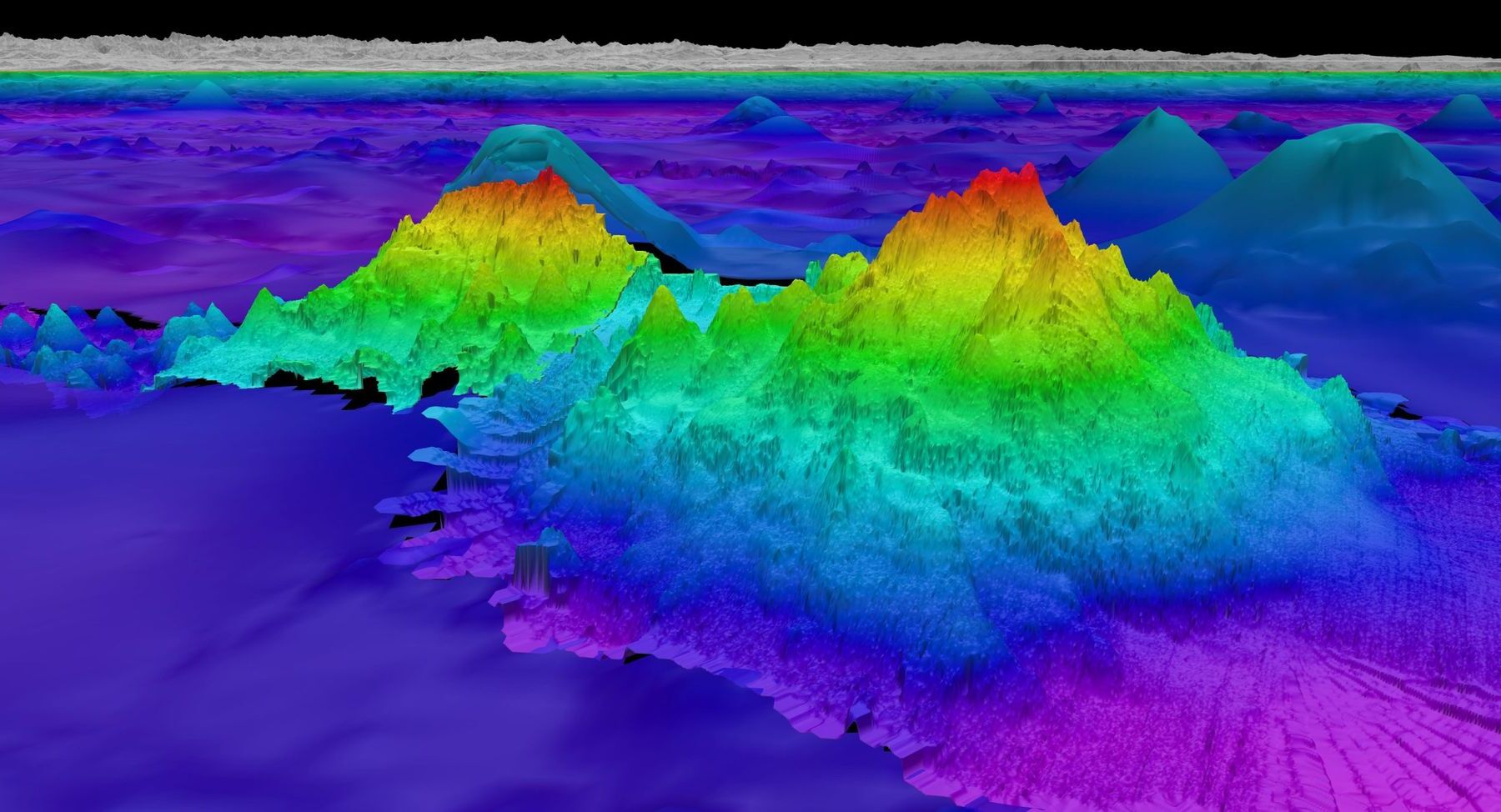
Seamounts are underwater mountains rising from the ocean floor, but what makes them so special? These submerged peaks, often formed by volcanic activity, create unique habitats teeming with life. Seamounts can be found in every ocean, yet many remain unexplored. They play a crucial role in marine ecosystems, providing shelter and feeding grounds for a variety of species. Their steep slopes and nutrient-rich waters attract fish, corals, and even large predators. Understanding these underwater giants helps scientists learn more about ocean biodiversity and geological processes. Ready to dive into some intriguing facts about seamounts? Let's get started!
What Are Seamounts?
Seamounts are underwater mountains formed by volcanic activity. They rise from the ocean floor but don't reach the surface. These geological features are fascinating and hold many secrets.
-
Seamounts are mostly volcanic. They are created by volcanic activity, often forming near tectonic plate boundaries or hotspots.
-
There are over 100,000 seamounts worldwide. Scientists estimate that there are at least 100,000 seamounts scattered across the world's oceans.
-
Seamounts can be massive. Some seamounts are taller than the highest mountains on land. For example, Mauna Kea in Hawaii is a seamount that, when measured from its base on the ocean floor, is taller than Mount Everest.
Importance of Seamounts
Seamounts play a crucial role in marine ecosystems. They provide habitats for various marine species and influence ocean currents.
-
Seamounts are biodiversity hotspots. These underwater mountains host a wide range of marine life, including corals, fish, and invertebrates.
-
They affect ocean currents. Seamounts can alter the flow of ocean currents, creating upwellings that bring nutrient-rich water to the surface.
-
Seamounts are important for fisheries. Many commercial fish species, such as tuna and swordfish, are found around seamounts, making them vital for the fishing industry.
Seamounts and Marine Life
The unique environment of seamounts supports diverse and abundant marine life. These ecosystems are often isolated, leading to the development of unique species.
-
Seamounts are home to unique species. Many species found on seamounts are not found anywhere else in the world.
-
Coral reefs thrive on seamounts. Cold-water corals often grow on seamounts, creating complex reef structures that provide habitats for other marine organisms.
-
Seamounts attract large predators. Sharks, whales, and other large marine predators are often found around seamounts, drawn by the abundance of prey.
Seamounts and Human Impact
Human activities can have significant impacts on seamount ecosystems. Understanding these impacts is crucial for conservation efforts.
-
Seamounts are vulnerable to fishing. Bottom trawling, a common fishing method, can cause significant damage to seamount ecosystems.
-
Mining poses a threat. Deep-sea mining for minerals can disrupt seamount habitats and harm marine life.
-
Seamounts are important for scientific research. Studying seamounts helps scientists understand marine biodiversity, oceanography, and geology.
Conservation of Seamounts
Efforts to protect seamounts are essential for preserving their unique ecosystems and the species that depend on them.
-
Marine protected areas (MPAs) can help. Establishing MPAs around seamounts can protect these ecosystems from harmful human activities.
-
International cooperation is needed. Many seamounts are located in international waters, requiring cooperation between countries for effective conservation.
-
Research and monitoring are crucial. Ongoing research and monitoring can help identify threats to seamounts and inform conservation strategies.
-
Public awareness is important. Raising awareness about the importance of seamounts can help garner support for their protection.
The Wonders Beneath the Waves
Seamounts are more than underwater mountains. They’re biodiversity hotspots, supporting unique marine life. These geological formations play a crucial role in ocean health, influencing currents and providing habitats for countless species. Scientists study seamounts to understand Earth's history and predict future changes. Despite their importance, many remain unexplored, hidden beneath the ocean's surface. Protecting these ecosystems is vital for maintaining marine biodiversity. Conservation efforts are underway, but more awareness and action are needed. Next time you think about the ocean, remember the seamounts and their hidden wonders. They’re a reminder of how much we still have to learn about our planet. So, let’s appreciate and protect these underwater marvels for future generations.
Was this page helpful?
Our commitment to delivering trustworthy and engaging content is at the heart of what we do. Each fact on our site is contributed by real users like you, bringing a wealth of diverse insights and information. To ensure the highest standards of accuracy and reliability, our dedicated editors meticulously review each submission. This process guarantees that the facts we share are not only fascinating but also credible. Trust in our commitment to quality and authenticity as you explore and learn with us.


